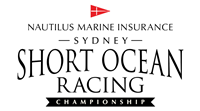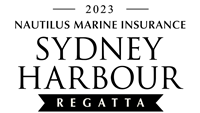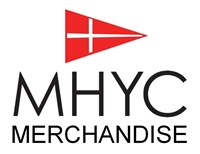Special Regulations
MHYC Requirements
MHYC Special Regulations Equipment Requirements: Audit Form 2025-2026
Special Regulations Audit Forms (updated November 2025)
-
Category 7 (Minimum required for Thursday Twilight and Wednesday Racing)
Keel and Rudder Inspection Forms ( Cat 1, 2, 3 Only)
To book an inspection, contact the Sailing Office on 8969 3102 or This email address is being protected from spambots. You need JavaScript enabled to view it.
Marine Communications Inspection Form (Recommended for Cat 1-3)
Current list of MHYC Auditors - Club / National
Current list of AS / NSW accredited Equipment Auditors (AS Website)
Australian Sailing Special Regulations Page
Australian Sailing Racing Rules and Appeals Page - including download of Racing Rules of Sailing Blue Book
Marine Flare Disposal Information
Get Checked Days - Saturday June 28 & Sunday 24 August 2025
MHYC holds a two annual Get Checked Days for Equipment Audits, which allows Club Members the perfect opportunity to have their boats audited prior to the new sailing season commencing free of charge. The dates for the 2025-2026 season free audits are Saturday 28th June and Sunday 24th August 2025.
Bookings for an equipment audit are to be arranged directly through the MHYC Sailing Office at This email address is being protected from spambots. You need JavaScript enabled to view it. .
Inflatable PFD's can be serviced by Your Boat Manager with drop-off and pick-up at the MHYC Marina Office. PFD's will collected Monday mornings and take 10-12 days for return. Please label all PFD's clearly with your details. Get in early to avoid delays in the lead up to the Get Checked Days by contacting Chris Wells on 0432 228 494 to book in. If you need PFD's inspected urgently contact SOS Marine at Botany on +61 2 9700 0233 and arrange to delivery and collect personally.
Fire extinguisher testing or replacement will be available at the club on the morning of the Get Checked Days 9- 12noon. For more information contact Craig Condon on 0413 627 047 or This email address is being protected from spambots. You need JavaScript enabled to view it.
Presentation of a Boat for Inspection process
• Boat owners should obtain and complete an Equipment Compliance form from their club (or download above) prior to the inspection.
• The owner or his representative should carry out an initial inspection and tick/sign the appropriate box - making sure to check expiry dates and quality of equipment, as well as identifying the location of equipment that may be asked to be presented during the inspection.
• Boat owners should make a firm appointment for an audit and they should be punctual.
• Necessary equipment should be laid out ready for inspection, including copies of service certificates and any additional safety documentation; ie stowage plans, Epirb registration, Life Raft Service Certificates, PFD Service Certificates. (Cat 1 and 2 inspections - owners should have a copy of these certificates on hand to submit to the auditor as a part of the inspection paperwork.)
• The skipper and knowledgeable crew member should be on board during the inspection.
• The owner's Australian Sailing number and vessel registration details shall be made available to the Auditor or the Equipment Compliance form cannot be completed.
Equipment Layout for Inspection
All items required for safety inspection should be laid out prior to the Auditor coming on board. Prior preparation will significantly reduce the time taken to complete the inspection.
• Storm boards ready to be put in place.
• Sea cocks and plugs exposed, not hidden by equipment.
• Know the water and fuel capacity of your tanks
• Fire extinguishers taken from brackets so date tags can be sighted.
• First Aid kits open and items with use by dates on the top so that expiry date can be checked.
• Publications and charts on chart table.
• Emergency navigation lights with batteries fitted.
• PFD's, harnesses, tethers and flares laid out.
• Radio installation inspection certificate.
• Life Raft Certificate
• Jackstays rigged.
• Lifelines tightened.
After the Inspection
It is the owners responsibility to ensure that the boat continues to comply in every respect with the category the boat is competing in. Owners should remain familiar with the Australian Sailing Special regulations and ensure that all equipment remains on the boat, is kept in good working order and that equipment is replaced or repaired as necessary.
The onus is NOT on the race organisers, the Club or the Equipment Auditors to perform ongoing checks or to confirm compliance. The responsibility remains with the boat owner - the audit only verifies that the equipment is on board at the time of the inspection.






